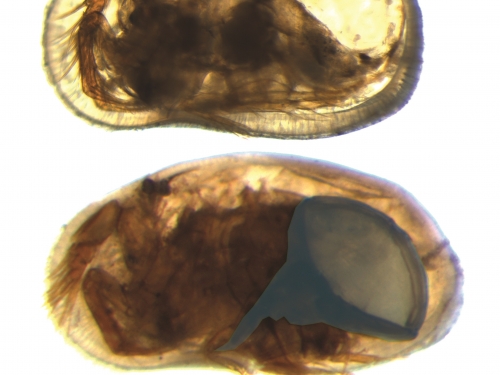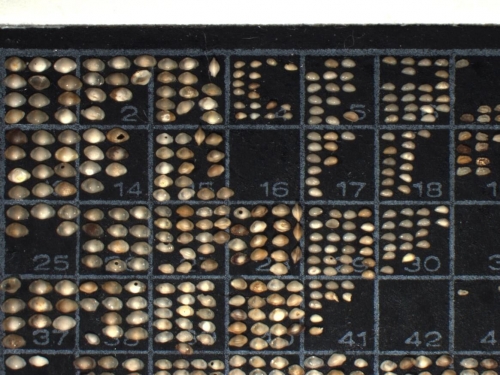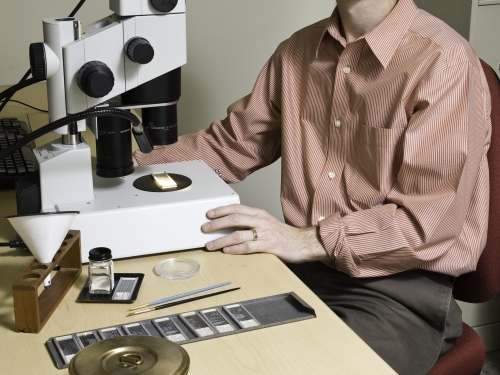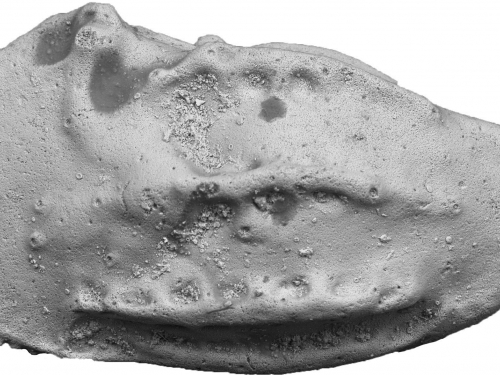Nearly 78 million-year-old fossil female ostracod of the species Veenia ponderosa. Measuring approximately 750 microns long, it is smaller than its male counterpart at 870 microns. This indicates the need to accommodate the large male genitalia. A team of scientists analyzed this and other specimens in the collection of the Smithsonian’s National Museum of Natural History to understand the role of sexual selection in extinction. Their findings were published in Nature April 11.
Credit: Gene Hunt, Smithsonian





